-
Exports Reignite Dairy Farmer's Impossible Dream
By USDEC October 8, 2018- Tweet
National Farmer's Day is October 12, when the dairy industry shares inspirational stories about people like Daniel Perazzo, who latched on to a big goal when he was only 6 years old.
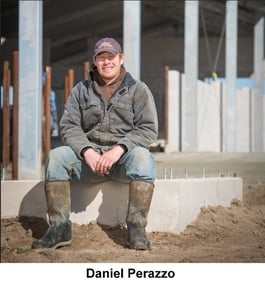 FALLON, Nevada -- The number appeared like a lightning bolt from a clear Nevada sky. It sparked a dream so big only a 6-year-old with an active imagination could believe it.
FALLON, Nevada -- The number appeared like a lightning bolt from a clear Nevada sky. It sparked a dream so big only a 6-year-old with an active imagination could believe it.High costs and low milk prices are forcing too many multi-generational dairy families to sell their farms to try something else.
This is not one of those sad stories. It's an inspirational tale for National Farmers Day (October 12), when the country pays tribute to all farmers and the dairy industry showcases real people like Daniel who get up early every morning to milk the cows and chase their version of the American dream.
Milk from America's dairy farmers ends up on local supermarket shelves. But it's also in dairy products like cheese and ingredients like whey protein shipped to fast-growing parts of the world where local dairy production can't keep up with rising demand, creating new opportunities for farmers like Daniel Perazzo.
See videos of other farmers like Daniel Perazzo, undeniably devoted to dairy.
The U.S. Dairy Export Council, National Milk Producers Federation and International Dairy Foods Association are showcasing the impact on a portal called "Got Jobs?" The message: Dairy creates job and exports create more jobs.
Dairy Delivers®—IDFA's interactive economic impact tool—shows how dairy creates an economic ripple effect beyond the dairy industry to related sectors like retail and construction, generating:
- 978,000 American jobs directly.
- Another 2 million jobs indirectly.
- $628 billion in total economic impact.
- $64 billion in business taxes.
- More than 1 percent of the country’s Gross Domestic Product (GDP).
A different world than his grandfather's
This is a world of global opportunity Daniel's late, great grandfather, Otto Perazzo, an Italian immigrant, could not have imagined when he bought the Perazzo homestead in 1941.
What drove Otto Perazzo was the belief that anyone in this country, no matter his or her heritage, can start an entrepreneurial venture that lasts generations.
That's exactly what has happened with the Perazzos, who keep investing in their farm, community and world.
Recorded in a spiral notebook
Daniel Perazzo, now 35, will never forget that day 30 years ago when the number 1,000 first came to him.
A child math whiz, he grabbed a sharpened pencil and spiral notebook. Sitting on his stool, he neatly wrote every numeral in succession, from 1 to 1,000 "just to feel how big 1,000 was."He did this six times. His conclusion: 1,000 is a big number.
“It also seemed like a nice, big round number,” recalls Daniel.
Families own more than 95 percent of dairy farms
Critics like to characterize us as “Big Dairy.” It’s true that the average dairy herd size has increased over the years. But what’s overlooked is that more than 95 percent of dairy farms are family-owned businesses, not multinational corporations. What's more, many of the manufacturing plants, including the plant the Perazzos ship their milk to, are farmer-owned.
Fallon is a rural community with a population of 8,600, bisected by U.S. Route 50, the "Loneliest Highway in America," where the official speed limit is 75 miles per hour, but most folks drive faster.
If you head eastbound on Highway 50 and don’t stop in Fallon, the next town is 110 miles away.
To many, the desert doesn’t seem like a place for a dairy business. But the Perazzo family has kept its operation running since Harry Truman was president and gas cost an average of 15 cents a gallon.
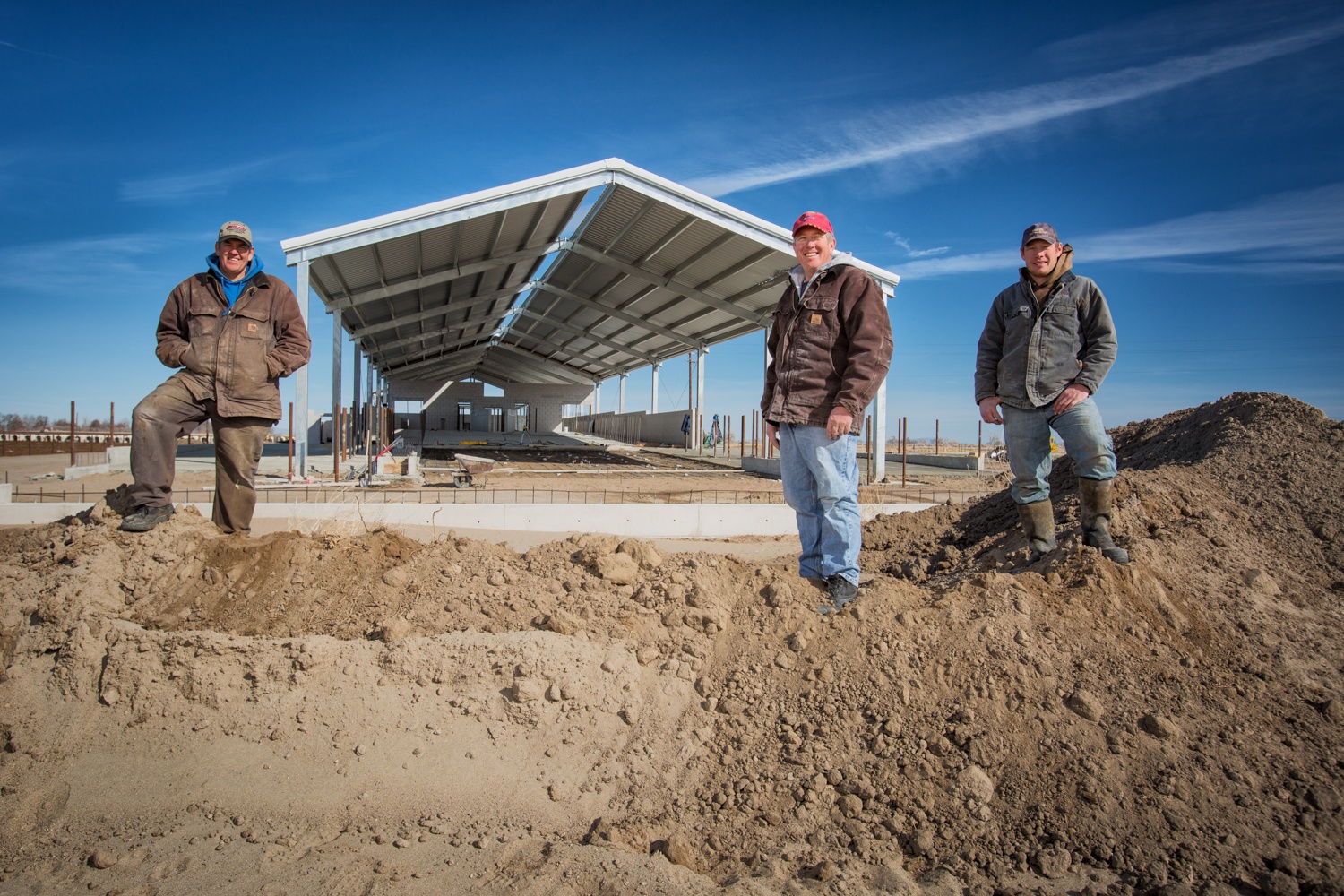 Pooling resources and taking out loans, the Perazzos took a bet on the future of dairy exports by building an ultra-modern barn that enabled them to expand their herd. Daniel Perazzo is right, Alan left and David center.
Pooling resources and taking out loans, the Perazzos took a bet on the future of dairy exports by building an ultra-modern barn that enabled them to expand their herd. Daniel Perazzo is right, Alan left and David center.
When the dream seemed dead
Like most dairy families, the Perazzos have had ups and downs. Ten years ago, the situation looked particularly bad as market dynamics lowered demand for Nevada milk.
Part of the problem was a lack of nearby processing plants, making milk transportation expensive. The Perazzos had 500 cows at that point but not much hope.
“I told myself this dream of 1,000 cows is never going to become a reality,” recalls Daniel. “We were stuck. We couldn’t grow. We couldn’t go anywhere.”
In some ways, the Perazzos were experiencing the consequences of the industriousness, innovation and efficiency of American dairy farmers.
When Otto Perazzo farmed in 1950, the average U.S. cow produced roughly 5,500 pounds of milk per year. With advances in technology, nutrition and animal care, the average cow is now producing about 25,000 pounds per year.
That efficiency has a downside. It contributes to a widening gap between domestic supply and demand. Unfortunately, the gap is projected to get worse, putting more farmers out of business if we rely entirely on U.S. consumption.
Fortunately, about 95 percent of the world’s population lives outside the United States, and much of it needs to import dairy products. The U.S. dairy industry saw this coming decades ago and began investing in export strategies.
Consequently, U.S. dairy exports have increased 604 percent since 1995, to $5.5 billion last year. Global demand is projected to continue to increase, creating new opportunities for farm families like the Perazzos.
A DFA plant rises in the desert
Taking a bet on a more global future, Dairy Farmers of America (DFA), a national cooperative owned by family farmers across the United States, built a gleaming white, modern dairy powder facility in Fallon.
Daniel’s dream of that 1,000-cow herd rose from the dead.
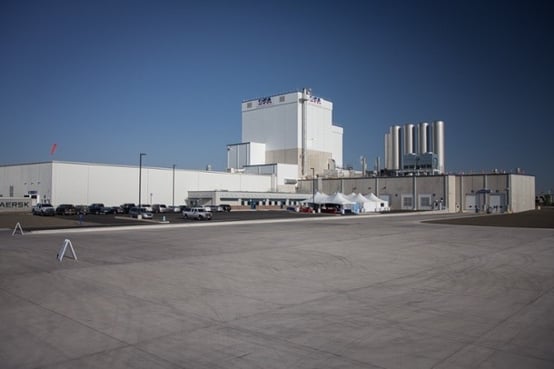 This DFA milk powder facility in Fallon opened in 2013 to meet long-range global demand.
This DFA milk powder facility in Fallon opened in 2013 to meet long-range global demand.
The plant would take all the milk the Perazzos could produce. The powder would be transported to West Coast ports in 25-kg. bags (55 pounds), then shipped to overseas markets.
Pooling resources, Daniel, father Alan and uncle David took out loans to build an ultra-modern barn, employing local workers while doing some of the construction themselves.
“We didn’t really look at the risks,” said Daniel. “We said this is our chance. Let’s go.”
They have made the most of the opportunity. This year, Perazzo Brothers Dairy was named the Dairy Farmers of America 2018 Western Area Member of Distinction, as highlighted in the video below.Click start arrow, lower left, to watch a DFA video about the Perazzo family
Global focus, local impactMilk prices have been so low they have put many American farmers under tremendous financial pressure.
There is, however, hope for the future. Global supply and demand dynamics still look promising for the long term. Many countries in Asia and other parts of the world can't produce enough milk to meet the dairy needs of their own population.
This is where U.S. farmers and exporters can step in, meeting the need with our abundant supply, strong safety record and sustainable farming practices.
The Perazzos have been buying as many cows as they can.
After another purchase of cows on February 8, they hit a milestone. Daniel wrote 1,035 on his calendar, up from 958 the day before, reaching the 1,000-herd goal Daniel set as a dreamy 6-year-old.
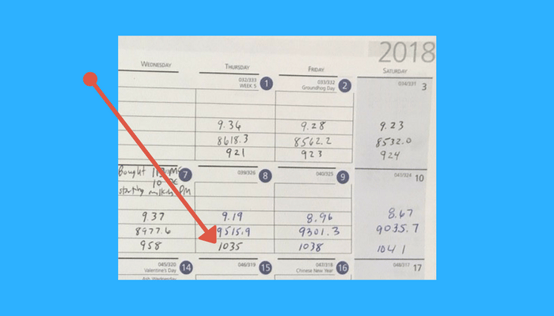 It took nearly 30 years, but Daniel Perazzo's childhood dream became a reality when he penciled in 1,035 (cows) into his calendar on February 8.
It took nearly 30 years, but Daniel Perazzo's childhood dream became a reality when he penciled in 1,035 (cows) into his calendar on February 8.
The Perazzos didn't blow any horns or set off any fireworks. They don't drink alcohol so a bottle of sparkling wine was out of the question. They simply went back to work.
“There really wasn’t any celebration,” Daniel said. Just quiet satisfaction of a goal being met through hard work, risk-taking business decisions and faith in the future.
Future may be bigger and brighter
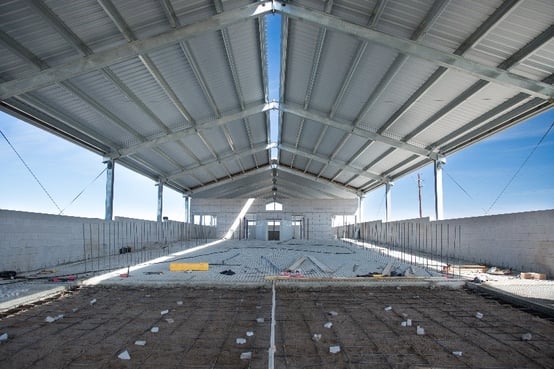 This ultra-modern barn was constructed to help meet future export demand.
This ultra-modern barn was constructed to help meet future export demand.
As global dairy demand continues to grow, the Fallon processing plant will serve as a great source of U.S. milk powders. The Perazzos can add even more cows. They have already reached 1,100. They built their ultra-modern barn with room for 1,600 cows.
Thanks to overseas dairy demand driving an increase in U.S. Dairy exports, Daniel's dream of caring for 1,000 cows wasn't too high.
It may have been too low.
Mark O'Keefe is vice president of editorial services at the U.S. Dairy Export Council.
National Farmers Day is Friday, October 12. Search for the hashtags #NationalFarmersDay and #UndeniablyDairy on social media to find and amplify stories about real farmers like Daniel Perazzo who are behind the U.S. dairy products people around the world love.
- What Dairy Farmers Need to Know About Increasing Exports to "The Next 5%"
- Got U.S. Jobs? Dairy Creates Nearly 3 Million!
Subscribe to the U.S. Dairy Exporter Blog
The U.S. Dairy Export Council fosters collaborative industry partnerships with processors, trading companies and others to enhance global demand for U.S. dairy products and ingredients. USDEC is primarily supported by Dairy Management Inc. through the dairy farmer checkoff. How to republish this post.
10 Most Recent Posts
Most Popular Posts in Past Year
Index of Posts by Topic
- #GotDairyJobs (4)
- About USDEC (66)
- Africa (6)
- Australia (4)
- Blog (8)
- Brazil (4)
- Canada (20)
- Central America (1)
- Cheese (58)
- Chile (1)
- China (54)
- Common food names (7)
- Company News (19)
- Consistent Supply (1)
- Crisis Management (3)
- Cuba (2)
- Dairy (6)
- Dairy checkoff (9)
- Dairy Ingredients (5)
- Dairy Management Inc. (2)
- Dairy Resources (1)
- Dairy Supply Chain (1)
- Dairy Trends (5)
- Documentation (3)
- EU (24)
- Experts on Dairy Exports (4)
- Exporter of the Year (2)
- Exports (24)
- Farmer leaders (1)
- Farming (38)
- Food Aid (8)
- Food Safety (8)
- Foodservice (3)
- Free trade agreements (34)
- Future trends (1)
- Geographical Indications (GIs) (10)
- Global Marketing (86)
- Global Shipping Crisis (1)
- Got Jobs? (9)
- Indonesia (1)
- Innovation (17)
- Japan (17)
- Krysta Harden (1)
- Market Access (25)
- Market Conditions (268)
- Member Services (17)
- Mexico (41)
- Middle East (9)
- Middle East & North Africa (3)
- Middle East/North Africa (9)
- Milk (4)
- Milk Protein Concentrate (MPC) (2)
- New Zealand (11)
- Next5% (20)
- Nonfat Dry Milk/Skim Milk Powder (8)
- Nutrition (19)
- Product Innovation (6)
- Protein (4)
- Regulations (5)
- Research & Data (326)
- Russia (3)
- Singapore (10)
- South America (8)
- South Korea (10)
- Southeast Asia (25)
- Strategic Insights (1)
- Supply (1)
- Sustainability (26)
- Technology (2)
- ThinkUSADairy (5)
- TPM23 (1)
- TPP (13)
- Traceability (8)
- Trade Barriers (5)
- Trade Data (7)
- Trade Policy (72)
- TTIP (5)
- UHT Milk (7)
- USMCA (2)
- Vietnam (4)
- Whey (6)
- Whey Ingredients (2)
- Whey products (10)
- Whole Milk Powder (WMP) (3)
- World Dairy Expo (1)
- World Milk Day (1)
- Yogurt (1)
Index of Posts by Date, Author
- June 2021 (13)
- March 2015 (12)
- September 2015 (12)
- April 2015 (11)
- December 2015 (11)
- March 2014 (10)
- February 2015 (10)
- October 2015 (10)
- October 2014 (9)
- June 2015 (9)
- July 2015 (9)
- November 2015 (9)
- March 2016 (9)
- October 2019 (9)
- September 2013 (8)
- May 2015 (8)
- August 2015 (8)
- January 2016 (8)
- February 2016 (8)
- March 2017 (8)
- December 2018 (8)
- May 2019 (8)
- December 2019 (8)
- June 2014 (7)
- November 2016 (7)
- May 2017 (7)
- May 2018 (7)
- July 2020 (7)
- June 2023 (7)
- July 2016 (6)
- August 2018 (6)
- October 2018 (6)
- November 2018 (6)
- February 2019 (6)
- June 2019 (6)
- August 2019 (6)
- March 2020 (6)
- April 2020 (6)
- June 2020 (6)
- June 2022 (6)
- February 2014 (5)
- June 2016 (5)
- August 2016 (5)
- September 2016 (5)
- December 2016 (5)
- February 2017 (5)
- July 2017 (5)
- October 2017 (5)
- January 2018 (5)
- April 2018 (5)
- June 2018 (5)
- July 2018 (5)
- September 2018 (5)
- January 2019 (5)
- March 2019 (5)
- April 2019 (5)
- July 2019 (5)
- September 2019 (5)
- November 2019 (5)
- January 2020 (5)
- August 2020 (5)
- October 2020 (5)
- April 2021 (5)
- January 2022 (5)
- May 2013 (4)
- September 2014 (4)
- April 2016 (4)
- May 2016 (4)
- October 2016 (4)
- January 2017 (4)
- April 2017 (4)
- June 2017 (4)
- August 2017 (4)
- September 2017 (4)
- December 2017 (4)
- February 2018 (4)
- February 2020 (4)
- May 2020 (4)
- February 2022 (4)
- September 2022 (4)
- April 2023 (4)
- December 2023 (4)
- November 2017 (3)
- March 2018 (3)
- September 2020 (3)
- December 2020 (3)
- February 2021 (3)
- May 2021 (3)
- August 2021 (3)
- December 2021 (3)
- March 2022 (3)
- April 2022 (3)
- May 2022 (3)
- October 2022 (3)
- December 2022 (3)
- May 2023 (3)
- July 2023 (3)
- November 2023 (3)
- March 2011 (2)
- June 2011 (2)
- September 2011 (2)
- March 2012 (2)
- June 2012 (2)
- July 2012 (2)
- March 2013 (2)
- July 2013 (2)
- November 2020 (2)
- January 2021 (2)
- March 2021 (2)
- July 2021 (2)
- September 2021 (2)
- October 2021 (2)
- November 2021 (2)
- July 2022 (2)
- August 2022 (2)
- January 2023 (2)
- March 2023 (2)
- October 2023 (2)
- January 2024 (2)
- February 2024 (2)
- April 2024 (2)
- June 2024 (2)
- July 2024 (2)
- November 2024 (2)
- December 2024 (2)
- February 2025 (2)
- June 2025 (2)
- July 2025 (2)
- September 2025 (2)
- November 2025 (2)
- January 2010 (1)
- February 2010 (1)
- March 2010 (1)
- April 2010 (1)
- May 2010 (1)
- June 2010 (1)
- July 2010 (1)
- August 2010 (1)
- September 2010 (1)
- October 2010 (1)
- November 2010 (1)
- December 2010 (1)
- January 2011 (1)
- February 2011 (1)
- April 2011 (1)
- May 2011 (1)
- July 2011 (1)
- August 2011 (1)
- October 2011 (1)
- November 2011 (1)
- December 2011 (1)
- January 2012 (1)
- February 2012 (1)
- April 2012 (1)
- August 2012 (1)
- September 2012 (1)
- October 2012 (1)
- November 2012 (1)
- December 2012 (1)
- January 2013 (1)
- February 2013 (1)
- April 2013 (1)
- June 2013 (1)
- August 2013 (1)
- October 2013 (1)
- November 2013 (1)
- December 2013 (1)
- January 2014 (1)
- April 2014 (1)
- May 2014 (1)
- November 2022 (1)
- February 2023 (1)
- August 2023 (1)
- September 2023 (1)
- March 2024 (1)
- May 2024 (1)
- August 2024 (1)
- September 2024 (1)
- October 2024 (1)
- January 2025 (1)
- March 2025 (1)
- April 2025 (1)
- May 2025 (1)
- August 2025 (1)
- December 2025 (1)
- USDEC (183)
- USDEC Staff (163)
- Alan Levitt (119)
- Tom Suber (41)
- Margaret Speich (22)
- Marc A.H. Beck (15)
- Vikki Nicholson-West (11)
- Angélique Hollister (11)
- Tom Vilsack (8)
- Jaime Castaneda (7)
- Matt McKnight (7)
- Véronique Lagrange (7)
- Margaret Speich and Mark O'Keefe (7)
- Ross Christieson (7)
- Paul Rogers (6)
- Shawna Morris (5)
- William Loux (5)
- Alan Levitt and Marc Beck (5)
- Krysta Harden (4)
- USDEC Communications (3)
- Kristi Saitama (3)
- Marilyn Hershey (3)
- Brad Gehrke (3)
- Tom Quaife (2)
- Nick Gardner (2)
- Jim Mulhern (2)
- Alan Levitt and William Loux (2)
- Kara McDonald (2)
- Luke Waring (2)
- Merle McNeil (2)
- Andrei Mikhalevsky (1)
- Rodrigo Fernandez (1)
- Dermot Carey (1)
- Jeremy Travis (1)
- Annie Bienvenue (1)
- Ross Christieson and Shawna Morris (1)
- Becky Nyman (1)
- Paul Rogers and Tom Quaife (1)
- Rick Ortman (1)
- Tony Rice (1)
- Barbara O’Brien (1)
- Paul Rogers and Mark O'Keefe (1)
- Dalilah Ghazalay (1)
- Amy Wagner (1)
- Mitchell Bowling (1)
- Erica Louder (1)
- Brad Scott (1)
- Amy Foor (1)
- Scott Lantz (1)
- Sandra Benson (1)
- Errico Auricchio (1)
- Jaclyn Krymowski (1)
- Krysta Harden, USDEC President and CEO (1)
.png)


